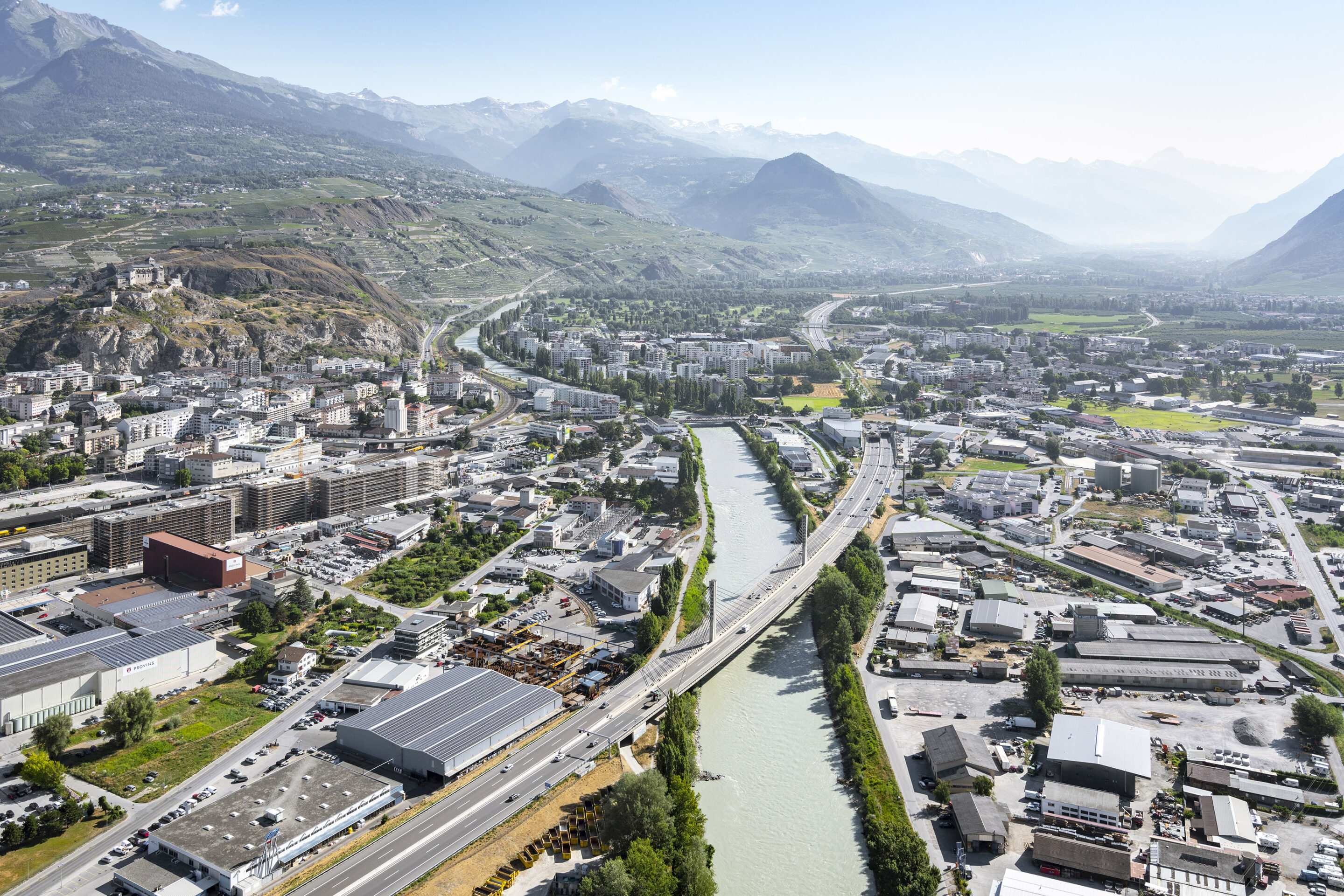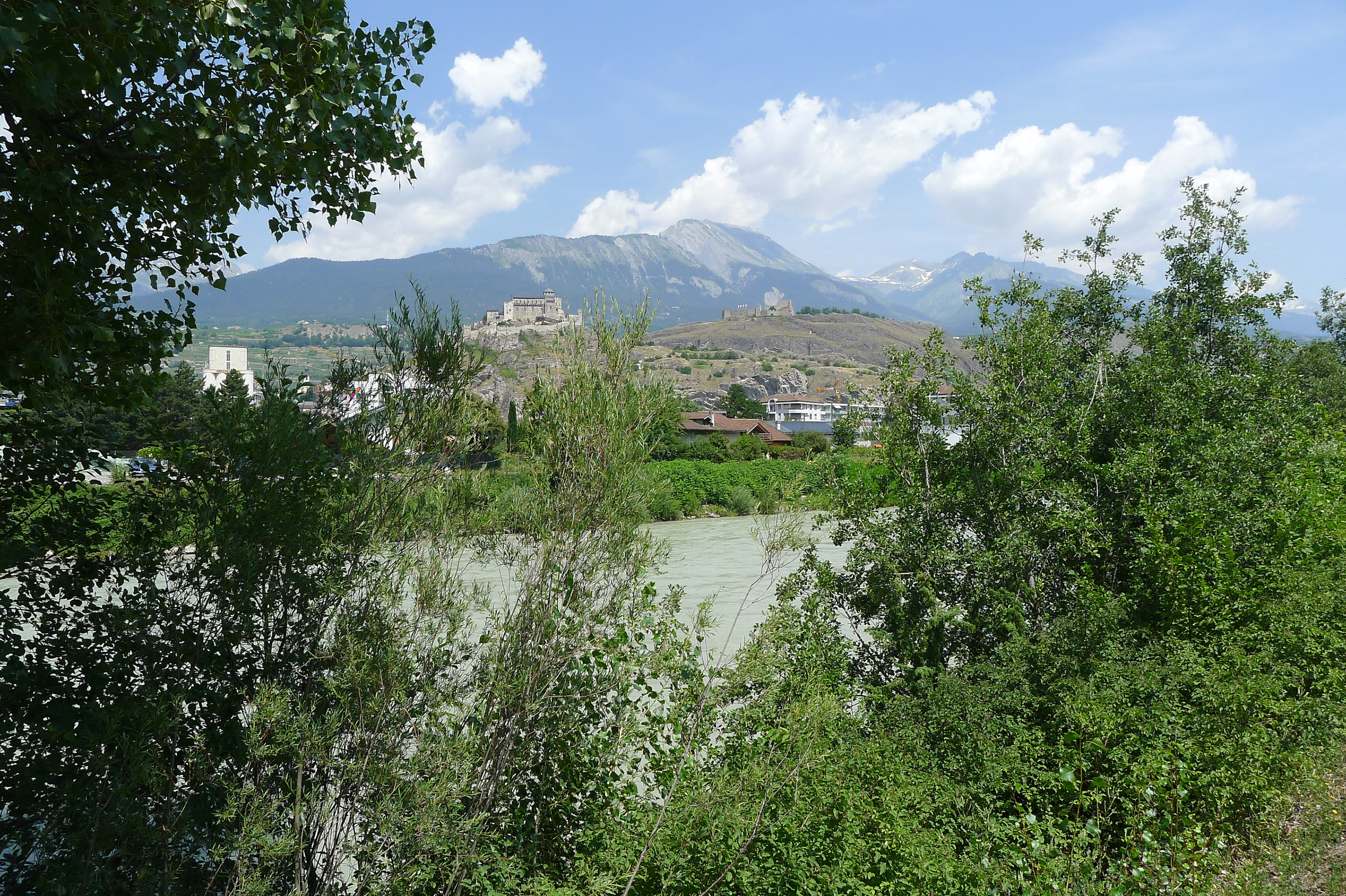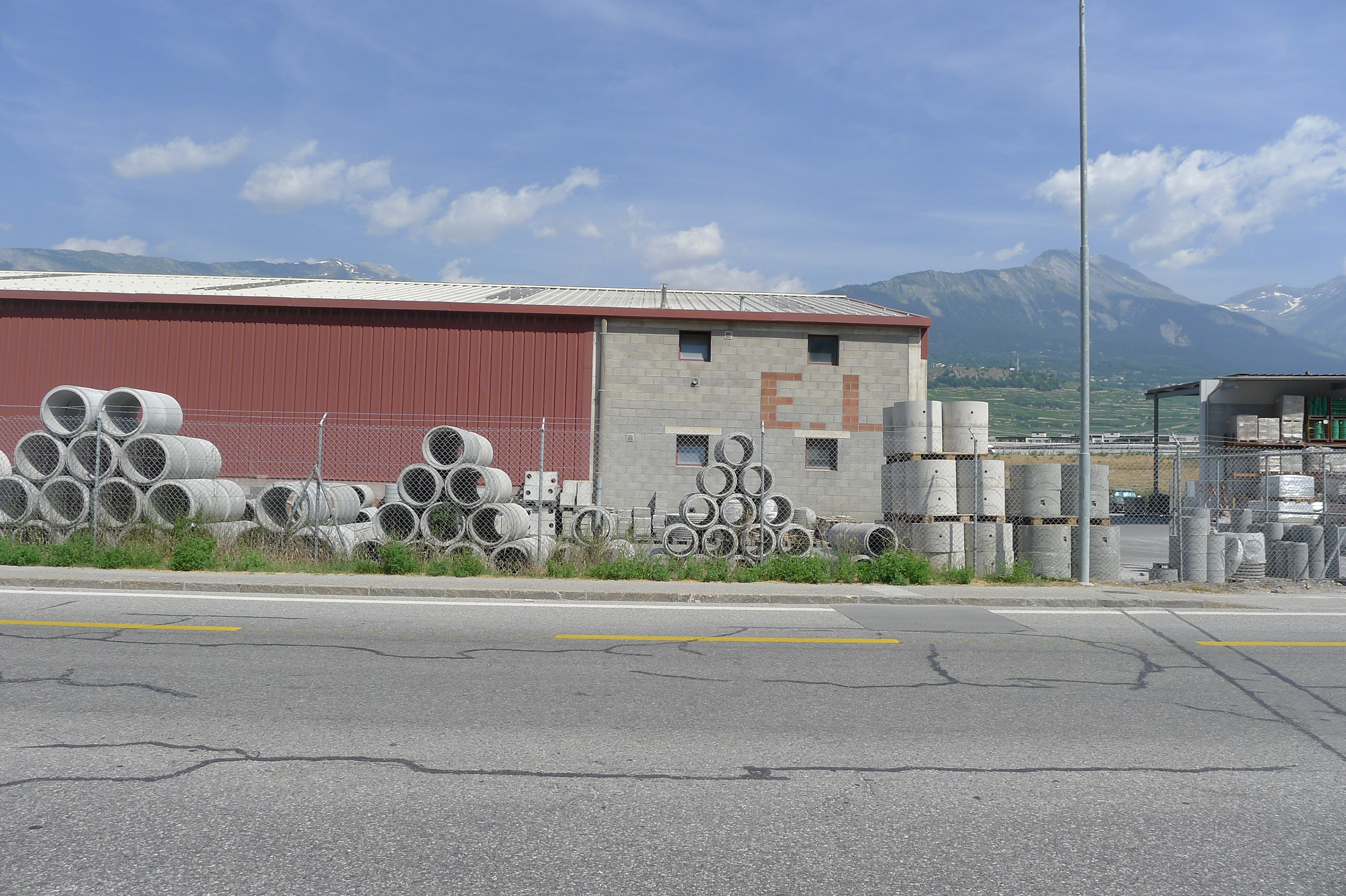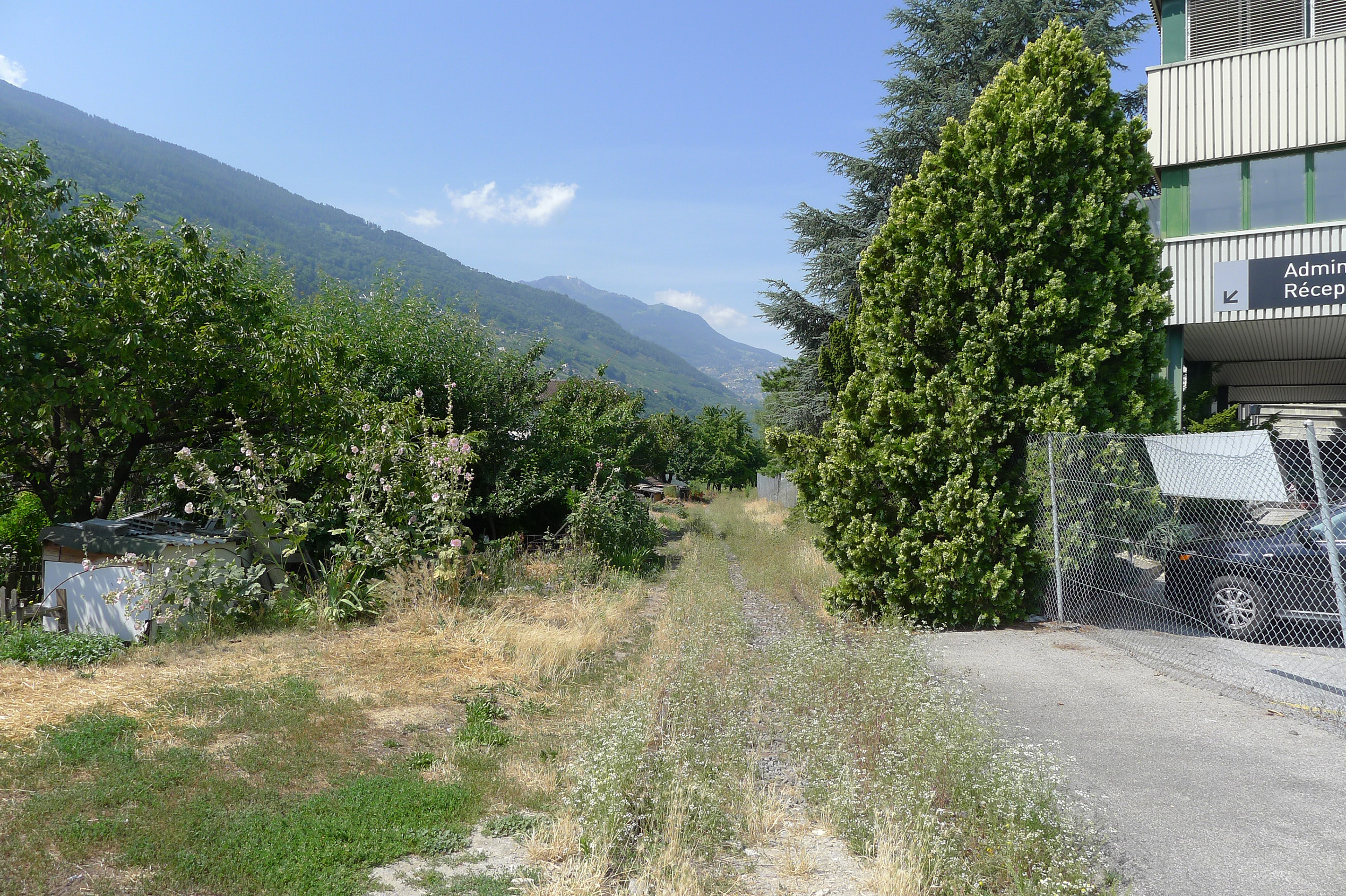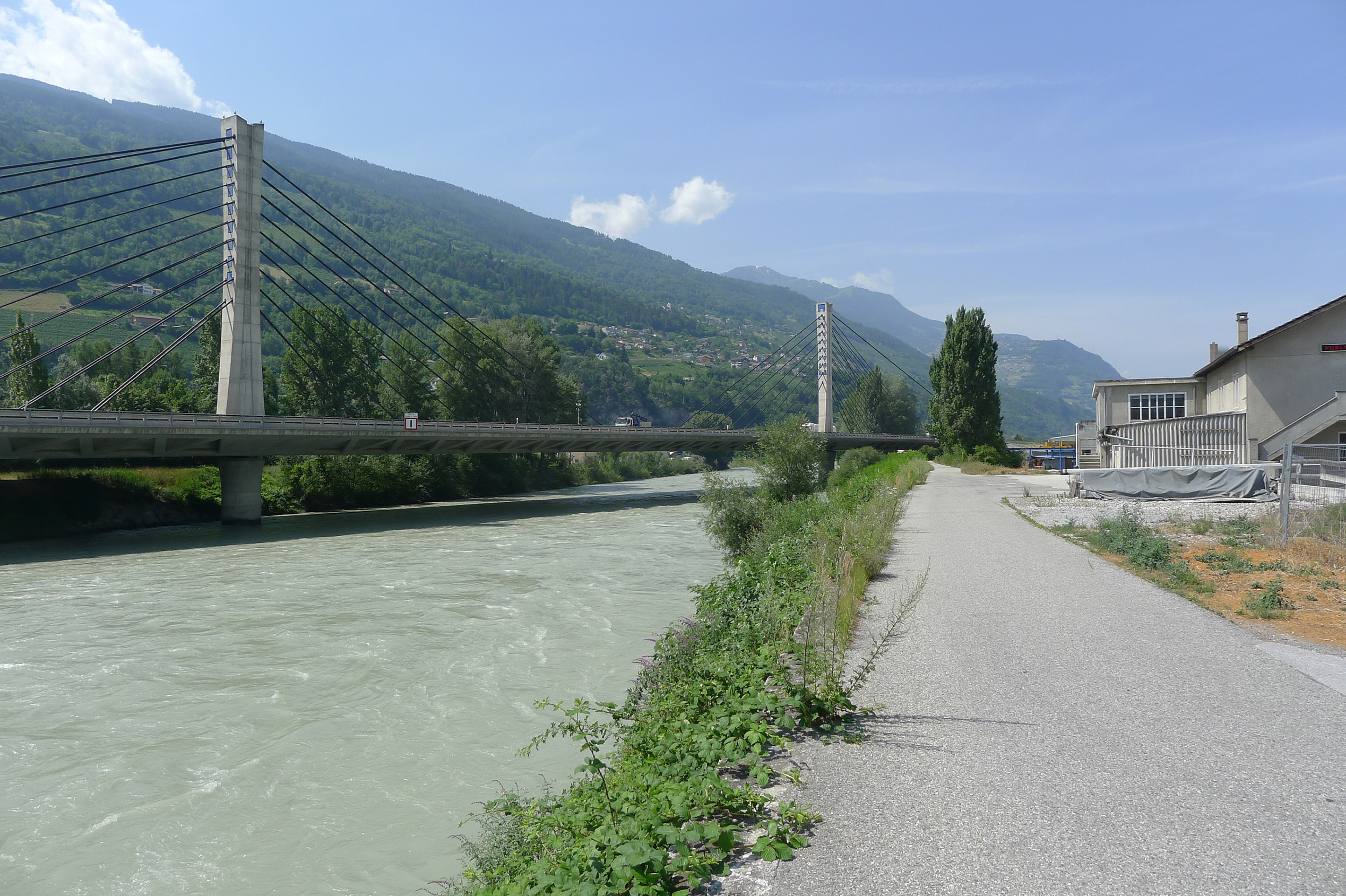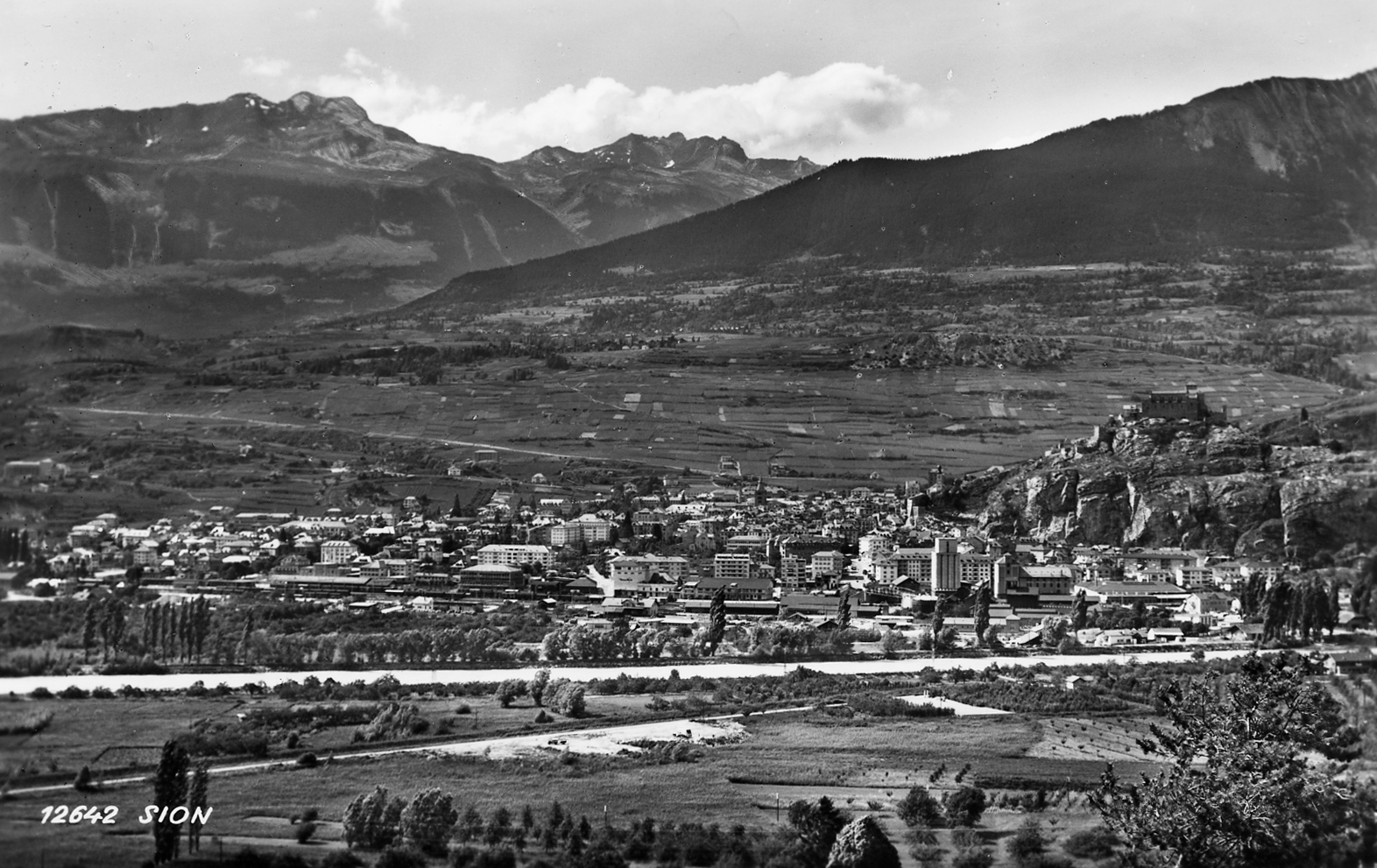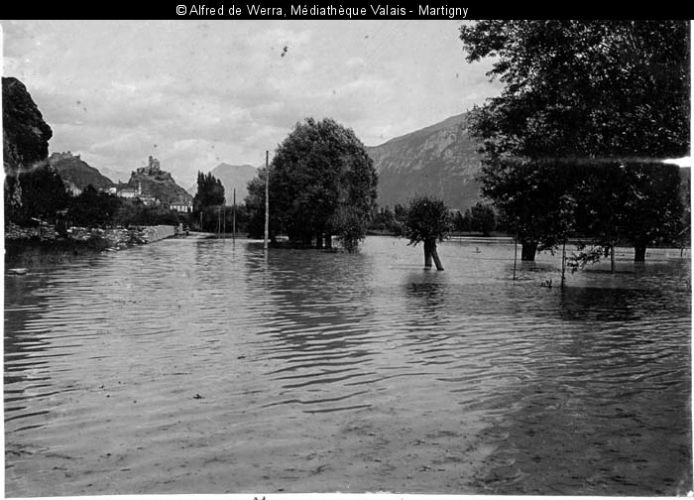Sion
The site is located to the south of the city of Sion and is a 13-hectare former industrial area undergoing changes in the coming decades. Bordered to the north by the new Energypolis Campus (which includes premises of the EPFL, the HES-SO, and the Ark Foundation) and to the south by the highway, the Rhône runs through the heart of the area, making it a particularly strategic space for creating new links between the city and its river. With this in mind, the research aims to explore through the architectural project the multiple issues and potentialities of such an evolution. At the programmatic level, the prospective principle of a certain mix of housing and activities serves as a basis for the visions. In addition, increased attention is given to the issue of housing in an urban environment. Relevant reflections on the establishment of a building part of the university campus - as well as a diversity of public spaces with respect to the singular characteristics of the site - are also part of the approach.

